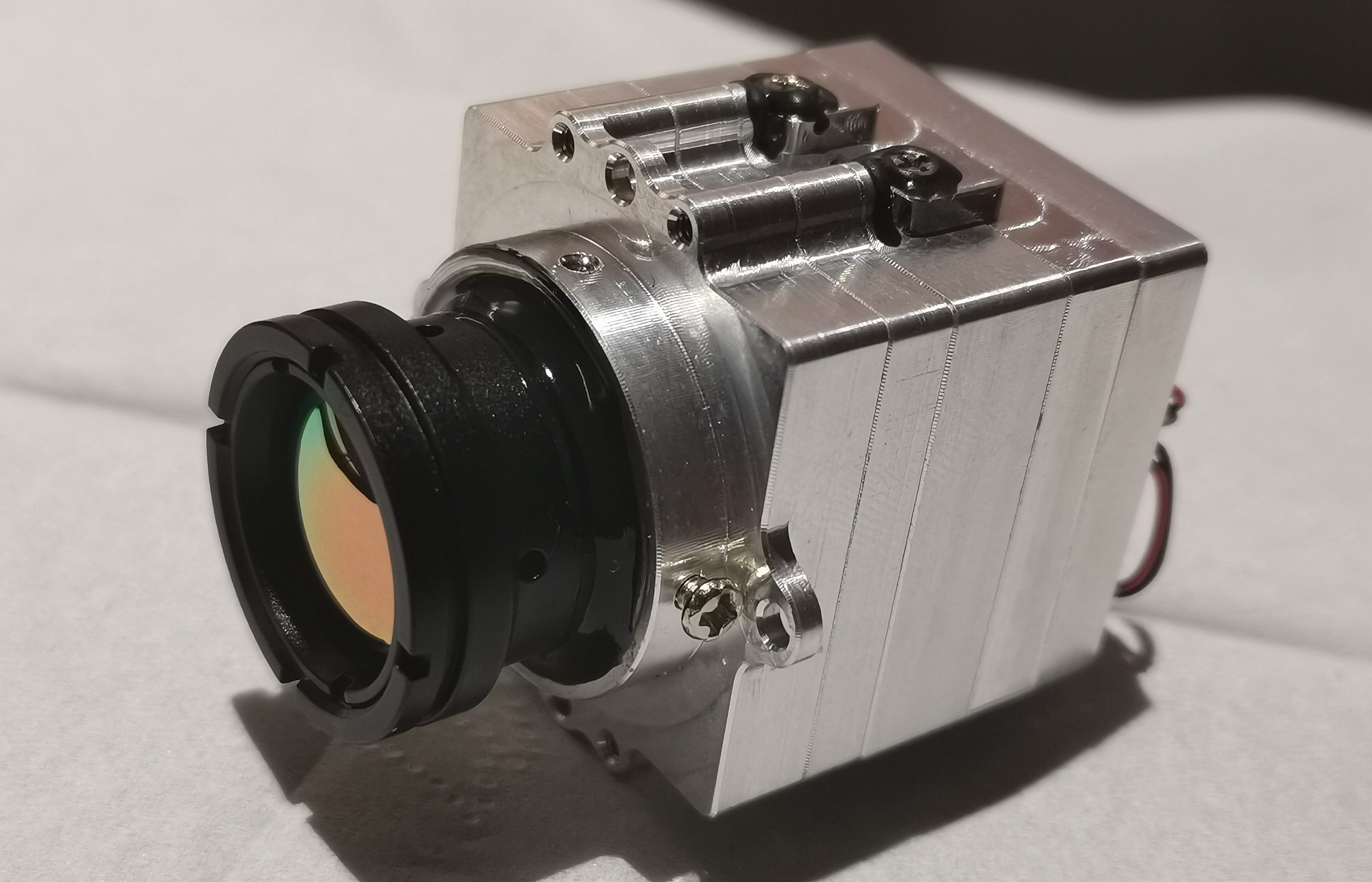Analog FPV Thermal Cameras for Drones: A Detailed Comparison

Exploring the Basics of Thermal Imaging Cameras
Thermal imaging cameras are cutting-edge devices that capture images using infrared radiation, allowing users to visualize and detect variations in temperature. These cameras are equipped with special sensors that can perceive heat emitted by objects, creating a visual representation of temperature disparities. Thermal imaging cameras have gained significant traction in various industries due to their unparalleled ability to unveil hidden thermal patterns.
What is a Thermal Imaging Camera?
A thermal imaging camera is a sophisticated tool that translates thermal energy (heat) into visible light for the purpose of analyzing an object or scene. Unlike traditional cameras, which rely on visible light, these cameras operate on the principle of detecting infrared radiation. By capturing and converting this radiation into an electronic signal, they produce thermal images that reveal temperature differences within the observed area.
How Do Thermal Cameras Work?
The functionality of thermal imaging cameras revolves around their capacity to detect and measure infrared radiation. This process involves the use of specialized sensors known as microbolometers, which respond to infrared radiation by generating electrical signals. These signals are then processed and transformed into a visual representation of temperature variations, enabling users to identify hotspots or cold areas within the captured scene.
Benefits of Thermal Imaging in Drones
Integrating thermal imaging technology into drones offers numerous advantages across diverse applications. By leveraging thermal imaging cameras, drones can effectively conduct search and rescue missions, monitor wildlife activities, and perform industrial inspections with enhanced precision and efficiency. The ability to capture thermal data from aerial perspectives empowers operators with valuable insights that were previously unattainable through conventional means.
Key Features to Consider in a Drone with Thermal Camera
When evaluating a drone with thermal camera, several key features must be taken into account to ensure optimal performance and functionality. These features encompass aspects such as resolution and sensitivity, field of view and range, as well as compatibility and integration.
Resolution and Sensitivity
Understanding Resolution
The resolution of a thermal imaging camera refers to the number of pixels used to create the image. Higher resolutions result in more detailed images, allowing for better identification of objects and heat differentials. When selecting a drone with thermal capabilities, it is crucial to prioritize models with high-resolution thermal cameras to capture clear and precise thermal imagery.
The Importance of Sensitivity
Sensitivity is another critical factor when considering a drone with thermal camera. It determines the camera's ability to detect minimal temperature variations accurately. Opting for a model with high sensitivity ensures that even subtle temperature differences are effectively captured, enhancing the overall utility of the thermal imaging capabilities.
Field of View and Range
Decoding Field of View
The field of view (FOV) denotes the extent of the observable area through the thermal imaging camera. A wider FOV enables drones to cover larger areas during aerial operations, making it an essential consideration for applications such as search and rescue missions or wildlife monitoring. Therefore, when selecting a drone equipped with a thermal camera, assessing the FOV is crucial for determining its operational efficiency.
Assessing Range Capabilities
In addition to FOV, evaluating the range capabilities of a drone with thermal camera is imperative. The range defines how far the thermal camera can effectively capture temperature variances from its position. Drones intended for expansive surveillance or inspection tasks necessitate extended range capabilities to ensure comprehensive coverage without compromising on image quality.
Compatibility and Integration
Ensuring Compatibility with Your Drone
Compatibility between the thermal camera and the drone platform is fundamental for seamless operation. Prior to procurement, it is essential to verify that the chosen thermal imaging camera aligns with your specific drone model, ensuring proper physical integration and functional compatibility.
Integration with Other Drone Systems
Moreover, considering integration possibilities with other drone systems is vital when selecting a drone with thermal camera. Compatibility with existing telemetry systems, flight controllers, or data transmission modules can significantly enhance operational efficiency by enabling streamlined data acquisition and real-time analysis during aerial missions.
Top Analog FPV Thermal Cameras for Drones: A Comparative Analysis
As the demand for drones with thermal cameras continues to rise, it is essential to explore the top analog FPV thermal cameras available in the market. Each camera model offers unique features and capabilities, catering to different user requirements and preferences.
Camera Model A: The Budget-Friendly Option
Key Features
Compact Design: This camera model boasts a compact and lightweight design, ensuring minimal impact on the drone's overall weight and aerodynamics.
Real-time Transmission: Equipped with advanced transmission technology, it provides real-time thermal imaging data to the operator's ground station.
User-friendly Interface: The camera is designed with an intuitive interface, allowing for seamless integration with various drone platforms.
Pros and Cons
Pros:
Affordable pricing makes it accessible to a wide range of drone operators.
Compact design minimizes additional payload weight on the drone.
Real-time transmission enhances operational efficiency during aerial missions.
Cons:
Limited resolution compared to higher-end models.
Reduced sensitivity may affect the accuracy of capturing subtle temperature variations.
Camera Model B: The High-Performance Choice
Key Features
High Resolution: This camera model is equipped with a high-resolution sensor, enabling detailed thermal imaging even from considerable distances.
Enhanced Sensitivity: It offers superior sensitivity, ensuring precise detection of minute temperature differentials.
Advanced Image Processing: Incorporates advanced image processing algorithms for enhanced image clarity and accuracy.
Pros and Cons
Pros:
Exceptional resolution facilitates clear and detailed thermal imagery.
Superior sensitivity enables accurate detection of subtle temperature variations.
Advanced image processing algorithms enhance overall image quality.
Cons:
Higher price point may limit accessibility for budget-constrained users.
Increased weight due to high-performance components may impact drone maneuverability.
Camera Model C: The All-Rounder
Key Features
Versatile Compatibility: This camera model is designed for seamless integration with a wide range of drone platforms, offering versatility in application.
Extended Range Capabilities: It provides extended range capabilities, allowing for comprehensive coverage during aerial operations.
Robust Build Quality: Built to withstand varying environmental conditions, ensuring reliability in diverse operational scenarios.
Pros and Cons
Pros:
Versatile compatibility caters to diverse drone models and applications.
Extended range capabilities enable expansive coverage during surveillance missions.
Robust build quality ensures durability in challenging environmental conditions.
Cons:
Moderate pricing may pose budget constraints for some users.
Slightly heavier build compared to compact models may impact flight endurance.
Practical Applications and Advantages of Using Thermal Imaging Cameras
Thermal imaging cameras have revolutionized various industries, offering unparalleled advantages in diverse applications. From search and rescue operations to wildlife monitoring and industrial inspections, the utilization of thermal imaging cameras has significantly enhanced operational efficiency and safety measures.
Applications in Search and Rescue Operations
In search and rescue operations, the deployment of thermal imaging cameras plays a pivotal role in locating individuals in challenging environments. Whether it's a nighttime mission or a scenario with limited visibility, these cameras enable rescue teams to detect body heat signatures, making it easier to identify and locate missing persons. The ability to visualize thermal patterns allows for swift and precise decision-making during critical situations, ultimately increasing the chances of successful rescue missions.
Moreover, thermal imaging cameras are instrumental in identifying potential hazards such as hotspots or fire outbreaks within disaster-stricken areas. By providing real-time thermal data, these cameras aid rescue teams in navigating through hazardous conditions while mitigating risks and ensuring the safety of both rescuers and survivors.
Advantages in Wildlife Monitoring
The use of thermal imaging cameras has transformed wildlife monitoring practices by offering an unobtrusive means of observing animal behavior and habitat dynamics. Researchers and conservationists leverage these cameras to track elusive nocturnal species, monitor migration patterns, and conduct population surveys without disturbing natural ecosystems.
By capturing thermal signatures emitted by animals, thermal imaging cameras provide valuable insights into wildlife activities that would otherwise remain concealed from human observation. This non-invasive approach not only minimizes disturbance to wildlife but also enables researchers to gather comprehensive data for ecological studies and conservation efforts.
Furthermore, the application of thermal imaging technology facilitates the identification of injured or distressed animals by detecting abnormal temperature differentials. This capability is particularly beneficial for wildlife rehabilitation centers and conservation organizations engaged in safeguarding vulnerable species.
Benefits for Industrial Inspections
In industrial settings, the integration of thermal imaging cameras has redefined inspection procedures across various sectors. These cameras enable maintenance personnel to conduct comprehensive assessments of machinery, electrical systems, and infrastructure components with heightened accuracy and efficiency.
During routine inspections, thermal imaging cameras can identify overheating components or faulty connections that may indicate potential equipment malfunctions or hazards. By detecting anomalies in temperature distribution, maintenance teams can proactively address issues before they escalate into costly breakdowns or safety risks.
Moreover, the use of thermal imaging technology enhances predictive maintenance practices by enabling early detection of equipment failures or inefficiencies. This proactive approach minimizes downtime, optimizes operational reliability, and contributes to substantial cost savings for industrial facilities.
Making the Right Choice
When considering the acquisition of a drone with a thermal imaging camera, it is essential to assess your specific needs and budgetary constraints. Understanding the intended applications and operational requirements will guide the selection process, ensuring that the chosen thermal imaging solution aligns with your objectives.
Assessing Your Needs and Budget
Before investing in a thermal imaging camera for your drone, carefully evaluate the primary use cases and environmental conditions in which the technology will be deployed. Whether it's for search and rescue missions, wildlife monitoring, or industrial inspections, identifying the specific requirements will help determine the necessary features and capabilities. Additionally, conducting a thorough assessment of your budgetary allocation is crucial to identify options that offer optimal value without exceeding financial limitations.
Considering factors such as resolution, sensitivity, field of view, range capabilities, and compatibility with your existing drone platform will enable you to make an informed decision aligned with both your operational needs and budgetary considerations.
Considering Future Applications
While evaluating potential thermal imaging cameras for drones, it's prudent to consider future applications beyond immediate requirements. Anticipating potential expansion of operations or diversification of use cases can influence the selection of a thermal imaging solution that offers scalability and adaptability. Assessing whether the chosen camera model can accommodate evolving needs and support advanced functionalities ensures long-term viability and minimizes the need for frequent upgrades.
Moreover, exploring compatibility with additional accessories or integration possibilities with emerging drone technologies can provide insights into the camera's potential for future enhancements and expanded capabilities.
Final Thoughts and Recommendations
In conclusion, selecting a thermal imaging camera for drones demands careful consideration of current needs, budget constraints, and future growth prospects. By prioritizing features that align with specific operational requirements while maintaining fiscal prudence, drone operators can make informed choices that maximize the utility of thermal imaging technology.
Furthermore, seeking recommendations from industry experts or consulting with experienced professionals in relevant fields can provide valuable insights into best practices and preferred models based on real-world applications.
Ultimately, making an informed decision when choosing a thermal imaging camera for drones involves balancing present necessities with future aspirations to ensure sustained operational efficiency and technological relevance.
See Also
Revolutionary Thermal Imaging Camera: Transforming Drone Tech and Surveillance
Contact Us: Ms. Coco Huang
E-mail: sales@iasun.cn
WhatsApp/Wechat: +86 13510421923

